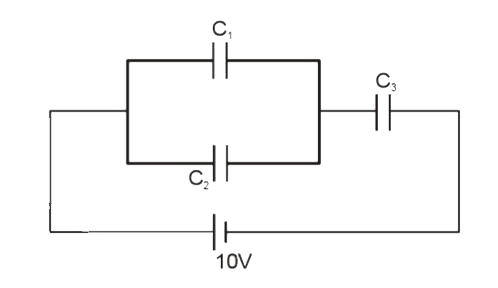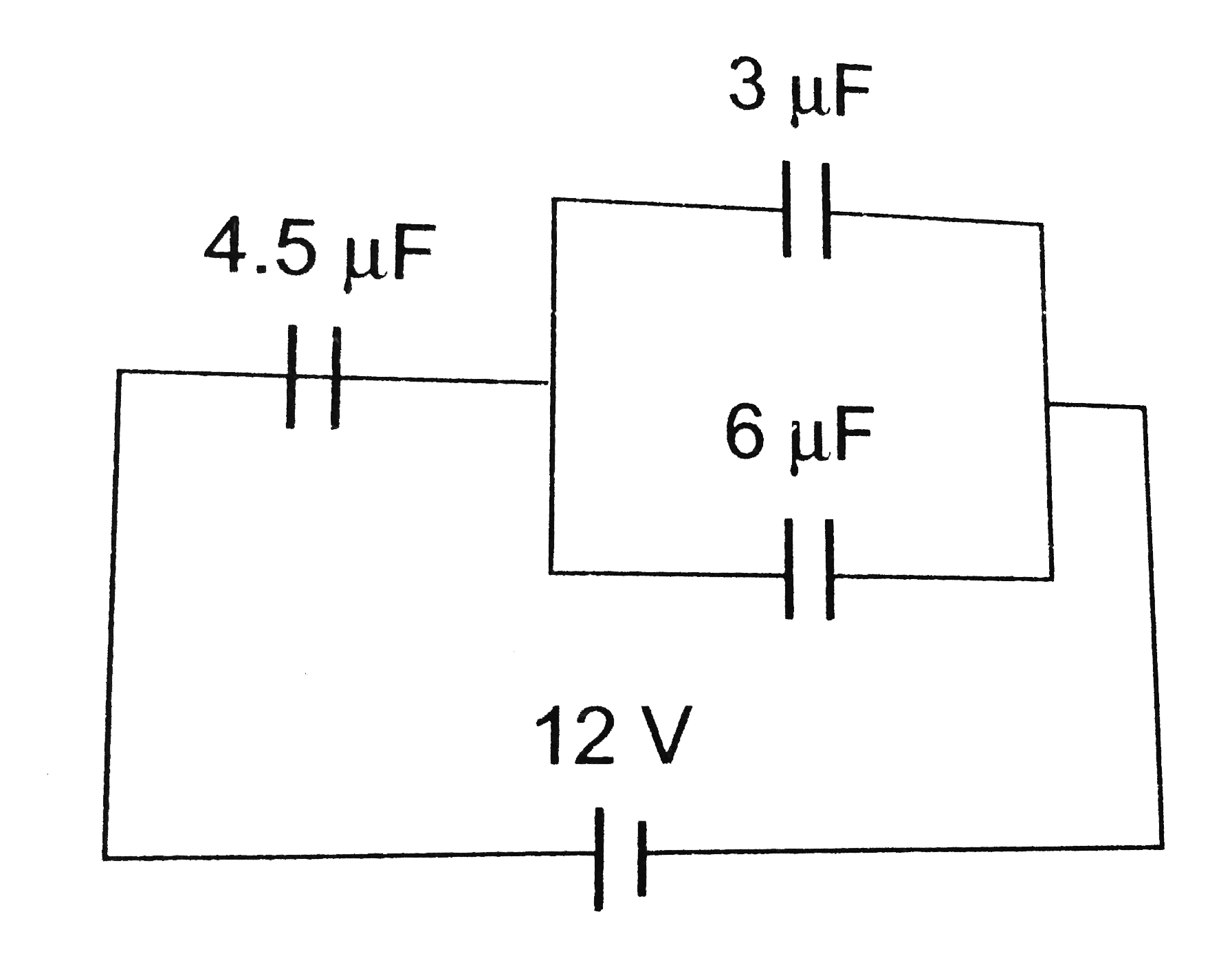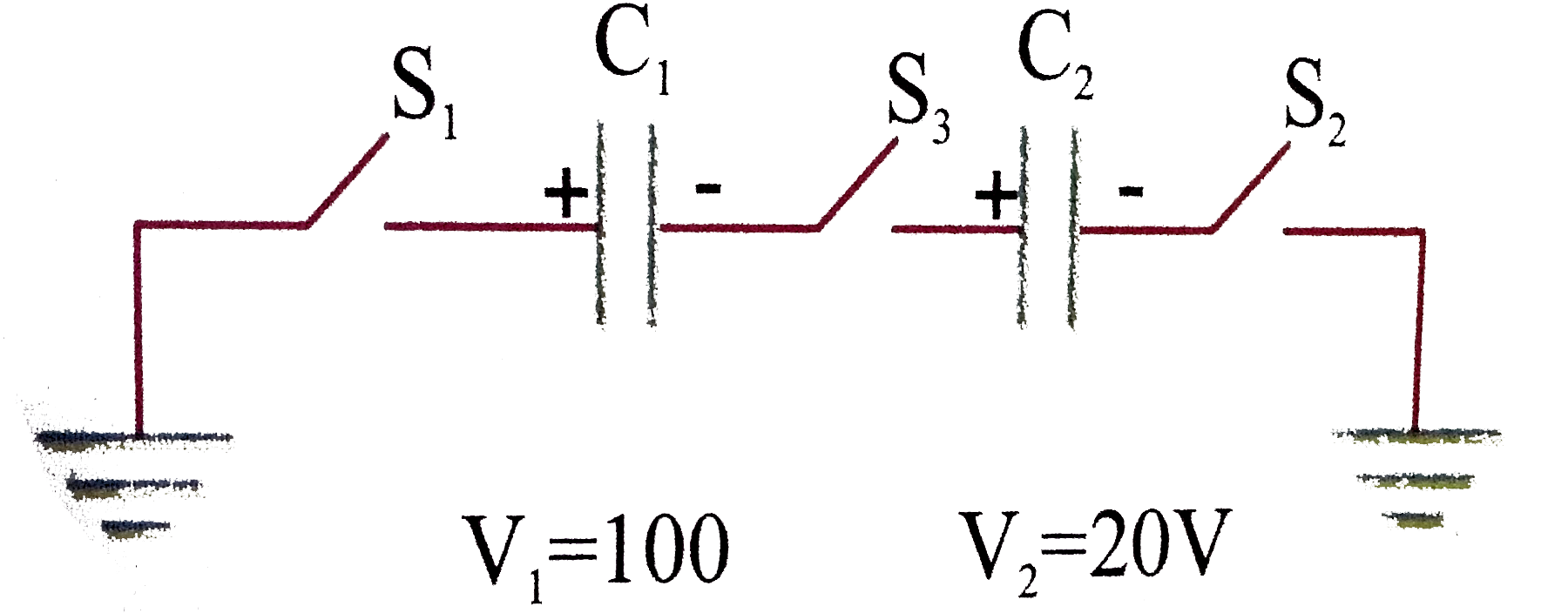In the circuit below C1=20μF , C2=40μ F and C3=50μ F . If no capacitor can sustain more than 50 V, then maximum potential difference between X and y is

95 V
75 V
150 V
65 v
The correct Answer is:A
Step by step video, text & image solution for In the circuit below C_(1) = 20 mu"F , " C_(2) = 40 mu F and C_(3) = 50 mu F . If no capacitor can sustain more than 50 V, then maximum potential difference between X and y is by Physics experts to help you in doubts & scoring excellent marks in Class 12 exams.
Updated on:21/07/2023Topper's Solved these Questions
- ELECTROSTATIC POTENTIAL AND CAPACITANCE BOOK - AAKASH INSTITUTECHAPTER - ELECTROSTATIC POTENTIAL AND CAPACITANCE EXERCISE - ASSIGNMENT SECTION - B
38 Videos
- ELECTROSTATIC POTENTIAL AND CAPACITANCE BOOK - AAKASH INSTITUTECHAPTER - ELECTROSTATIC POTENTIAL AND CAPACITANCE EXERCISE - ASSIGNMENT SECTION - C
53 Videos
- ELECTROSTATIC POTENTIAL AND CAPACITANCE BOOK - AAKASH INSTITUTECHAPTER - ELECTROSTATIC POTENTIAL AND CAPACITANCE EXERCISE - EXERCISE
20 Videos
- ELECTROMAGNETIC WAVESBOOK - AAKASH INSTITUTECHAPTER - ELECTROMAGNETIC WAVESEXERCISE - ASSIGNMENT SECTION - D Assertion-Reason Type Questions
25 Videos
- GRAVITATION BOOK - AAKASH INSTITUTECHAPTER - GRAVITATION EXERCISE - ASSIGNMENT SECTION - D (ASSERTION-REASON TYPE QUESTIONS)
16 Videos
Similar Questions
In fig 25-31 C1=10.0μF,C2=20.0μFandC3=5.00μF If no capacitor can withstand a potential difference of more than 100V without failure , what are (a) the magnitude of the maximum potential difference that can exist between points A and B and (b) the maximum energy that can be stored in the three capacitor arrangement?

View SolutionIn the circuit shown the capacitors areC1=15μF,C2=10μFandC2=25μF.Find

(i) The equivalent capacitance of the circuit
(ii) The charge on each capacitor and
(iii) The potential difference a across each capacitor.
View Solution
Knowledge Check
In the circuit shown below C1=10μF, C2=C3=20μF, and C4=40μ F. if the charge on C1 is 20μC then potential difference between X and Y is
 A2 VB3 VC6 VD3.5 V
A2 VB3 VC6 VD3.5 VIn the arrangement C1=10μ,FC2=10μF and C3=20μF . What is the equivalent capacitance ( in μF ) between points A and B ?
 A7.5B10C12D15
A7.5B10C12D15In the circuit shown in the figure, the potential difference across the 4.5μF capacitor is
 A8/3 voltB4 voltC6voltD8volt
A8/3 voltB4 voltC6voltD8volt
In the circuit shown in figure C1=1μF and C2=2μF. The capacitor C1 is charged to 100V and the capacitor C2 is charged to 20V. After charging then are connected as shown. When the switches S1,S2 and S3 are closed, the charged flowing through S1 is
 .
.
View SolutionIn Fig. 25-25 a potential difference V=75.0 V is applied across a capacitor arrangement with capacitances C1=10.0μF,C2=5.00μF,andC3=15.0μF. What are (a) charge q3 (b) potential difference V3 and ( c) stored energy U3 for capacitor 3, (d) q1 (e) V1and(f)U1 for capacitor 1, and (g) q2(h)V2 and (i) U2 for capacitor 2?
View SolutionIn fig.25-25 a potential arrangement with capacitances applied across a capacitor arrangement with capacitances C1=10.0μF,C2=5.00μF,andC3=4.00μF. IF capacitor 3 undergoes electrical breakdown so that is becomes equivalent to conducting wire, then for capacitor 1 what are the increase in (a) charge, (b) potential difference, and ( c) stored energy
View SolutionTwo capacitors of capacitance C1=2μF and C2=8μF are connected in series and the resulting combination is connected across 300 volts. Calculate the charge, potential difference and energy stored in the capacitor separately.
View SolutionConsider the circuit shown where C1=6μF,C2=3μF and V=20V. Capacitor C1 is first charged by closing the switch S1. Switch S1 is then opened, and the charged capacitor is connected to the uncharged capacitor C2 by closing S2.

View Solution
